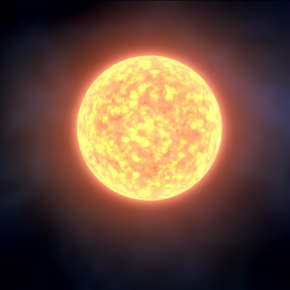A rare binary star because it is very poor in iron, a sign that it was formed shortly after the Big Bang, has just been discovered with the VLT (ESO).

The star SMSS 1605-1443 has an iron concentration of the order of 1/1000000 the concentration of iron in the Sun. This low iron content is explained by its great age, it was formed of gas very little polluted by the elements produced by massive stars and dispersed by the explosions of supernovas. The star also has a very high concentration of C/Fe, a type of chemical composition usual among low-iron stars.

An international team [1] has managed to clarify two fundamental facts about the nature of this star, thanks to the exceptional accuracy of the ESPRESSO spectrograph, powered by one of the 8m diameter VLT telescopes at the European Southern Observatory in Chile.
First, the team measured variations in the radial velocity of the star. ESPRESSO measured a variation of 300 m/s over about 116 days. This slow variation implies that the star is part of a long period binary system.
This result confirms the very recent theoretical indications that low metallicity stars form in multiple systems. Moreover, one of the questions raised by the presence of a companion is : "Is this companion evolved and produced the carbon that we observe ? Was this system, instead, formed in a gas highly enriched in carbon ?"
The team, including two researchers from the CNRS, determined a lower limit to the carbon isotopic ratio : 12C/13C > 60. This limit excludes that carbon is formed in an evolved star. So the formation medium of this system was enriched in carbon by a particular type of stars called weak supernovae which have the property to produce carbon but only small amounts of iron.
[1] Astronomers from laboratories in Italy, France, Spain, Portugal and Switzerland
